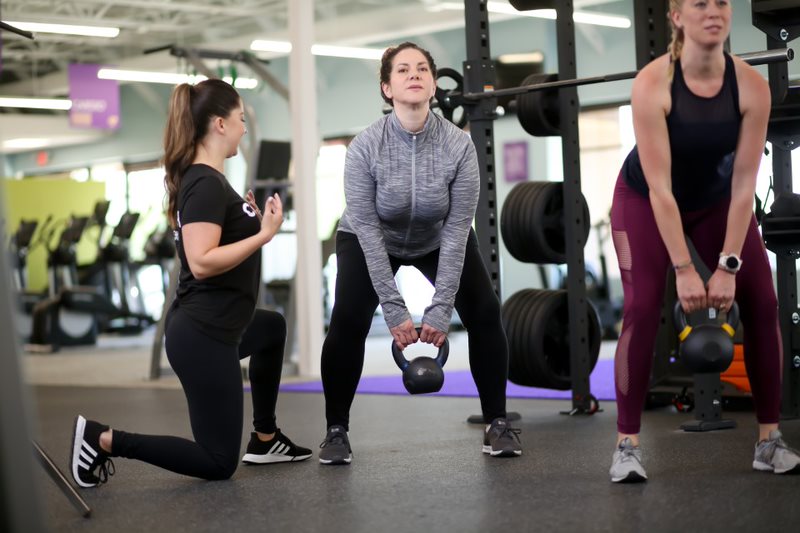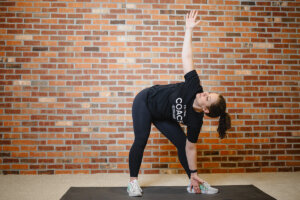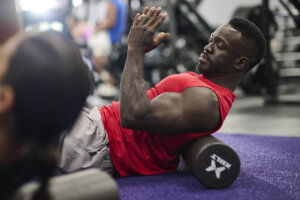Similar to squatting, deadlifting is another workhorse in the gym soliciting the entire body to execute the movement. While some lifters swear it’s a back exercise, others incorporate it into their lifting routine strictly for the leg benefits. But most people keep coming back to this powerhouse move because it works a little bit of everything from your forearms and your core to your back and your glutes. If you’re new to deadlifting, you probably actually aren’t as much of a newbie as you think. Chances are you perform this movement in your everyday life whenever you pick something heavy up off the floor—though you may not be using the correct deadlift form. Read on to learn how this dynamic powerlift can give you the butt, the abs and the legs you’ve always wanted.
How to Deadlift
Anyone can do a deadlift and everyone probably has done some variation at some point in their everyday life (think picking up kids up off the floor or bending to lift something heavy). But it’s also easy to get this move wrong leading to bothersome back problems and neck strain. Deadlifting is usually done with a barbell, but it can also be done using dumbbells or kettlebells. Proper deadlifting form depends on the specific type you’re doing, but in general, it can be summed up in one brief sentence: never lock the knees, bend at the hips, keep your back flat and pick the barbell up off the floor. The biggest mistake that people make here is that they either lock their legs or arch/round their back. Both mistakes make this exercise less effective and possibly even harmful.
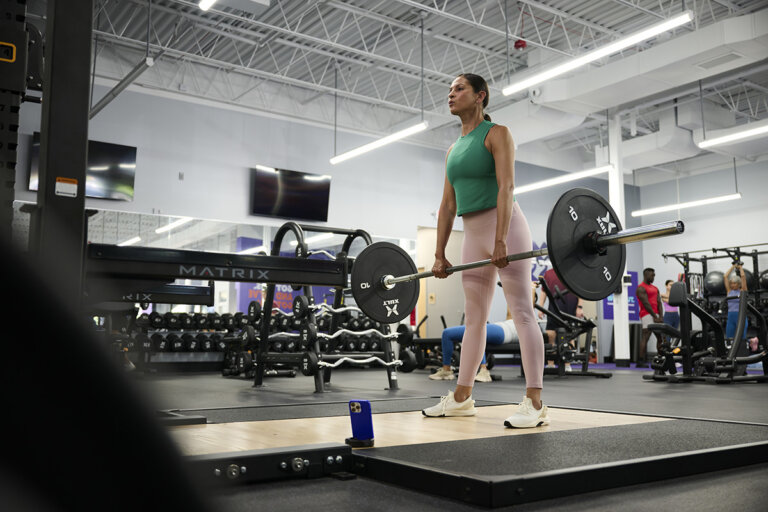
To learn how to do a conventional deadlift, follow these steps and take note of the proper form notes:
- Load a barbell with plated weights. You can also choose to just lift the barbell.
- Step up to the barbell placing your toes beneath it. Position your feet shoulder-width apart and put a slight bend in your knees.
- Keeping your core engaged and your back flat, bend at the hips toward the barbell.
- With an overhand grip, grab the bar with both hands; your hands should be slightly outside of your legs.
- Sit your hips back and bend your knees almost as if you were going to get into a squatting position. Engage the glutes and drive your heels through the floor and drive your hips forward as you lift the bar keeping the bar in close proximity to your legs as it moves upward.
- Once you have pushed yourself into a standing position, lock your hips at the top.
- Release the locked position of the hips, push your butt back and resume your bent knees. Begin to lower the bar back toward the floor keeping the bar close to the legs.
- When the bar is close to meeting the floor, you can drop it in a controlled fall and then start from Step 3 to continue on to your next rep.
- Once you are comfortable with the conventional deadlift, find a tempo, rep count and weight that works for you and your fitness goals, and add this robust exercise into your regular lifting plan.
Benefits of Deadlifts
The benefits of deadlifts are all-encompassing from the shoulders to the calves. For starters, mastering the deadlift technique is helpful for your everyday life. Once you get into the habit of using your legs instead of your back to lift heavy objects, you’ll save your back from avoidable stress. Secondly, deadlifts are tremendously effective for building leg muscles and glutes, improving posture, and strengthening your back muscles. And the benefits don’t stop there either. Incorporating deadlifting exercises into your lifting routine tightens your core, targets your forearms, and improves your grip, too.
Since deadlifts are a compound movement (meaning they work more than one muscle at a time), you get a total body workout from a singular exercise. Since several muscles are working together to lift the bar, you can lift heavier weights; the heavier the weights, the more muscle mass that’s being built. The more muscle mass, the more explosive you can be while doing other exercises or playing sports.
Types of Deadlifts
Like most lifting exercises, there are several types of deadlifts you can do whether you need to modify for an injury or muscle soreness or if you just want to take your workout up a notch. Many of them follow a similar technique as the standard barbell deadlift but use different foot placement or equipment. Keep reading to learn about the different types of deadlifts so you can find the best option for you.
Straight Leg Deadlifts
Straight leg deadlifts are also known as stiff leg deadlifts. Like a traditional deadlift, the grip, the approach, and the use of a barbell all apply here. However, the straight leg deadlift mechanics are slightly different in that the legs are kept relatively straight* throughout the entire movement putting major emphasis on the hamstrings. Instead of the squat-like bend at the knees, the bend will be in the hips which is how the hamstring muscles are recruited.
Other than the bent knees, the technique of picking up and lowering the barbell is the same here as it is with the basic deadlift.
*Even though it’s called a straight leg deadlift, you should still keep a slight bend in the knees to prevent your legs from locking.
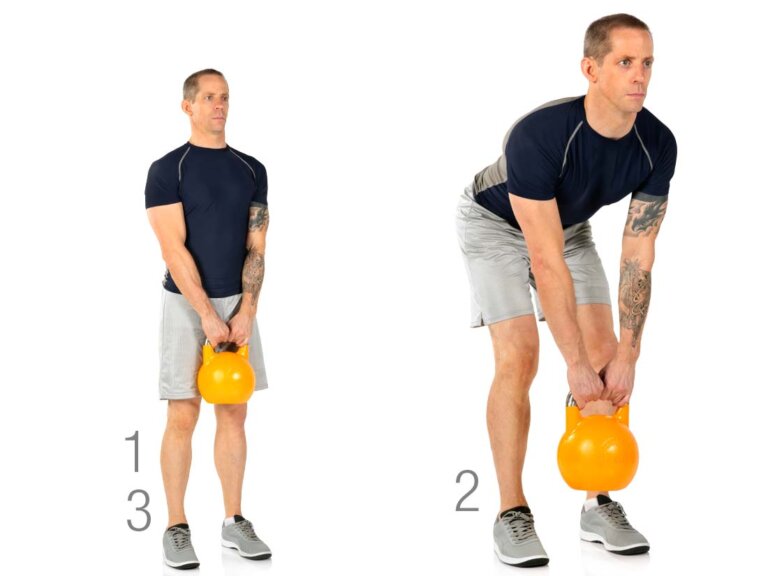
Romanian Deadlifts
Romanian deadlifts are one of the more popular breeds of deadlifting. Commonly referred to as RDLs, this type of deadlift differs from the conventional in that you never touch the floor with the bar or bend your knees in a squat-like stance. Instead, you will bend at the hips moving the barbell down to your shins until the hamstrings are pulled tight, similar to a straight leg deadlift. Your knees should be slightly bent throughout the lift to avoid injury. The reps will be continuous without pause or touching the floor unlike the traditional version that starts and ends on the floor.
Whereas traditional deadlifts activate many muscles, Romanian deadlifts zero in on the glutes and hamstrings.
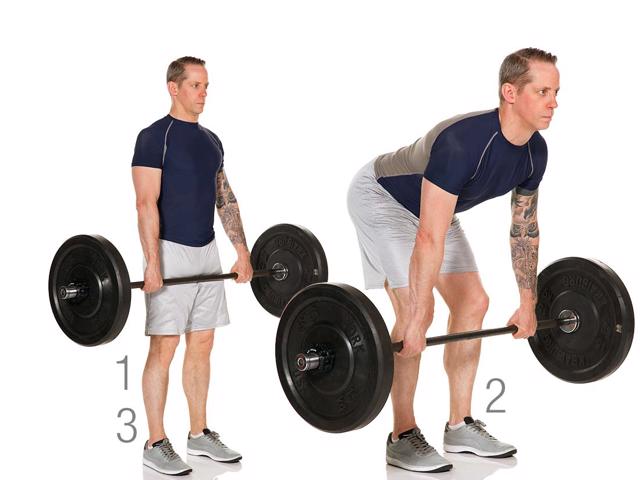
Sumo Deadlift
If you’ve been practicing the traditional deadlift on a regular basis, the sumo deadlift can break up the monotony of the same old routine. The major benefit with this type is that it uses less back muscle so you can still lift heavy while giving your back a break.
As its name suggests, the sumo deadlift uses a wide, sumo wrestler-like stance to work the hamstrings, glutes, upper back and hips. To do a sumo deadlift, you will set your feet wide with your toes pointed outward. Your shins should be a 90-degree angle in line with your toes. Unlike other deadlifts, your hand placement will be inside of the legs and in line with your shoulders. Continue the technique of the conventional deadlift keeping your feet at a wide stance and your hands in a narrow grip.
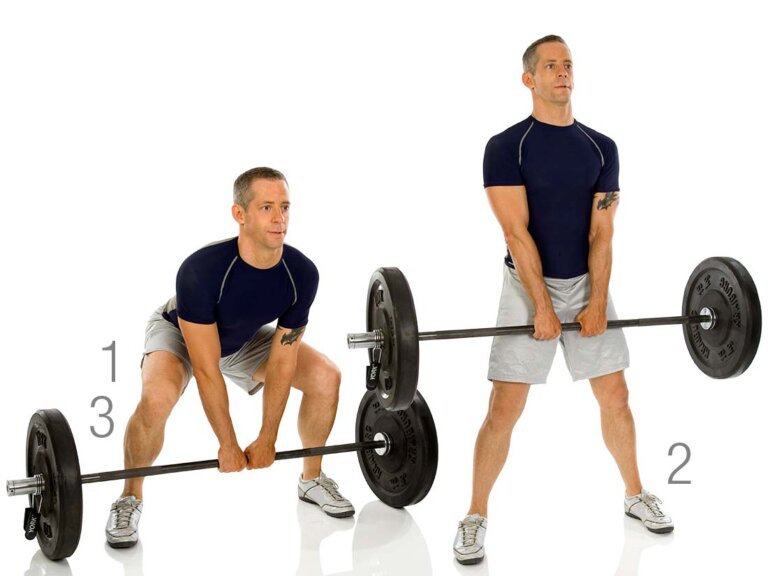
Trap Bar (Hex Bar Deadlift)
The trap bar deadlift is the same as a hex bar deadlift. The interchangeable names refer to a deadlift that uses a type of barbell called the hex bar or trap bar. The hex bar is named after the hexagonal shape of the bar and the trap bar gets its name from the fact that you are positioned (or trapped) in the middle of the hexagon. Whatever you call it, this is one deadlift alternative you shouldn’t overlook especially if you have injuries or soreness.
The trap bar deadlift is not quite as common as the barbell deadlift, but experts agree that it provides relief for your back by relying more on the quads. When you do a standard barbell lift, you lean forward to pick the bar up off the floor, thus somewhat using your back muscles. But when you do a trap bar deadlift, the bar is closer to your center of gravity and relies more on the legs to do the movement. Also, because it’s closer to your center of gravity, you will have more balance and explosive power through the legs. Last but not least, since you grab the bars at the sides, your hands have a neutral grip instead of an overhand grip which can put less stress on the wrists.
- To do a trap or hex bar deadlift, position yourself in the center of the hex bar. Your feet should be lined with your hips. Bend at the hips and the knees reaching down for the handles on both sides of the bar.
- Sit your hips back pulling on the hamstrings. Your chest should be up and your back flat.
- With your core engaged, push yourself up to a standing position in one fluid, explosive movement by straightening your hips and your legs.
- At the top, keep your core and your glutes tight. Using control, lower the bar back to the ground and set up for the next rep.
Barbell Deadlift
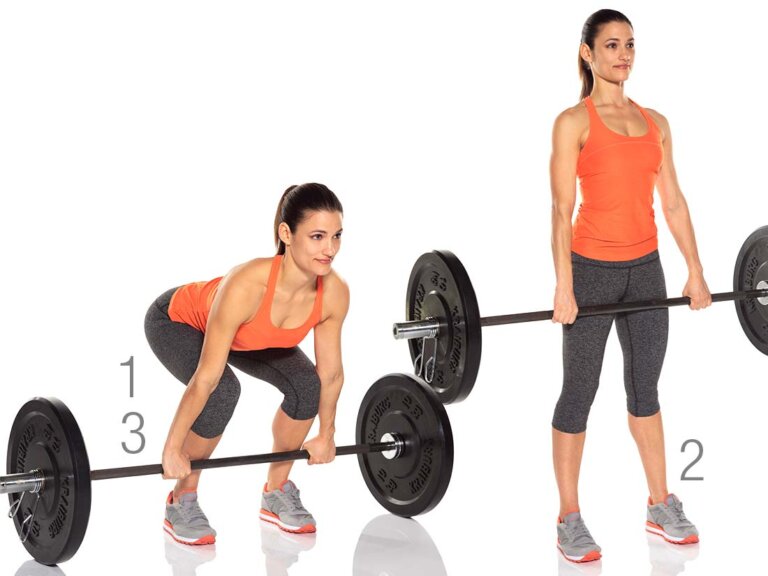
Deadlift Bar
There are two main types of deadlift bars that you can use to do this lift. The most common, and the one you’ll likely start with, is the standard barbell weighing about 45 pounds. To do the barbell deadlift, you can either choose to lift just the bar or added plated weights. If you do add weights, make sure to secure the plates onto the bar using a collar.
If you’re struggling to execute the deadlift with proper form, the hex bar will naturally put you in the right position. The hex bar, also called a trap bar, weighs the same as a standard barbell, but is shaped quite differently. It still has a singular bar, but has angular bars in the middle of it that are connected to form a hexagonal shape. The technique is still the same, but because you are positioned (or trapped) between the two bars, it naturally forces you to bend and lift correctly.
Don’t be intimidated by deadlifting just because you see people at the gym loading their barbells up with weights you would never dream of lifting. You don’t have to lift really heavy weights to see results from adding deadlifts into your gym session. Start by focusing on the proper form of a conventional deadlift, continually increase the weight and try different variations, and you’ll never find yourself bored with this exercise.
